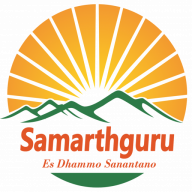
In our ancient Indian Vedic Sanatan tradition, Shravan Maas (also spelled Sawan Maas) is given the highest spiritual significance. It is considered the holiest month for earning divine merits (punya) and is especially revered for the worship of Lord Shiva.
Table of Contents
ToggleWhen is Shravan Maas 2025?
Shravan Maas is the fifth month of the Hindu lunar calendar, typically falling between July and August. In 2025, Shravan Maas in North India begins on July 11 and ends on August 16.
Kanwar Yatra: One of the Largest Pilgrimages on Earth
One of the most visible and spiritually charged traditions during this month is the Kanwar Yatra. Millions of Kanwariyas (pilgrims) walk barefoot carrying decorated kanwars (bamboo poles with holy water) from sacred rivers—particularly the Ganga—to offer it on Shiva Lingams in their hometowns.
In 2025, by late July, it was reported that over 2.5 crore (25 million) Kanwariyas had already reached places like Haridwar, Rishikesh, Gaumukh, and Sultanganj. Participation peaks in the last week of Shravan, making it one of the largest annual religious gatherings globally.
Who Did the First Kanwar Yatra? Ravan – The First Devotee
According to ancient mythology and puranic lore, the origin of the Kanwar Yatra traces back to Ravan, the mighty king of Lanka and one of the greatest devotees of Lord Shiva.
It is said that:
- Ravan performed deep penance and devotion toward Lord Shiva during Shravan Maas.
- He traveled to Mount Kailash to worship Shiva, carrying holy Ganga water in a kanwar to perform Abhishek.
- This act of bhakti (devotion), walking barefoot with sacred water, is believed to be the first Kanwar Yatra ever performed.
Because of Ravan’s devotion, many believe he was the original Kanwariya, setting the precedent for this sacred pilgrimage that millions now follow annually during Shravan.
Why is Shravan Maas So Spiritually Important?
The spiritual significance of this month goes far beyond numbers. Even those who don’t regularly follow religious practices often participate in spiritual rituals during this period.
Many scholars link the special importance of Shravan Maas to Chaturmas—the four holy months that begin with Devshayani Ekadashi. During these months, saints, gurus, and spiritual teachers would traditionally stay in one place, enabling people to engage in deep listening (shravan), introspection, and transformation.
Meaning Behind the Name “Shravan”
The word Shravan has two deep meanings:
- Shravan Nakshatra – The month is named because, on the full moon (Purnima), the moon is in Shravan constellation.
- Shravan (श्रवण) – Literally means listening, especially to divine knowledge or scriptures.
Both meanings are beautifully interlinked, making this month a time when spiritual listening and receptivity reach their peak.
Scientific and Mythological Significance
- Mythology: Shravan Maas is associated with the legendary Samudra Manthan (churning of the ocean), where Lord Shiva drank the deadly poison (Halahala) to save the world, earning the name Neelkanth.
- Science: The monsoon season weakens digestion and increases microbial activity. Thus, fasting and a sattvic vegetarian diet are encouraged to cleanse the body and maintain health.
Major Rituals During Shravan Maas
People engage in numerous rituals and fasts during this month:
Key Rituals:
- Abhishek (Water offering) on Shiva Lingam
- Visiting Shiva temples
- Maintaining a sattvic (pure vegetarian) diet
- Listening to kathas (spiritual discourses) and participating in satsangs
Common Vrats (Fasts):
| Vrat Name | Significance |
| Sawan Somvar Vrat | Every Monday; for blessings of Lord Shiva |
| Solah Somvar Vrat | 16 Mondays; observed by unmarried girls for ideal husband |
| Pradosh Vrat | On 13th lunar day; for Shiva-Parvati blessings |
| Mangala Gauri Vrat | Tuesdays; for marital bliss |
| Shani Vrat | Saturdays; for Lord Shani’s blessings |
Energies of Shravan Nakshatra
The month is dominated by the Shravan Nakshatra energy, which is said to activate:
- Deep spiritual curiosity
- Interest in scriptures and higher truths
- Desire to be around positive and righteous people
- Natural inclination towards truth, devotion, humility
This energy makes people receptive, thoughtful, and more likely to adopt constructive change in life.
Why Listening (श्रवण) is a Spiritual Tool
In Vedantic philosophy, Shravan is considered the most powerful tool to know the ultimate reality.
As Chanakya said:
“श्रुत्वा धर्मं विजानाति, श्रुत्वा त्यजति दुर्गतिम्”
(Through listening, we understand dharma; through listening, we abandon ignorance.)
Listening leads to:
- Knowledge of the unknown
- Correction of wrong thinking
- Cultivation of true humility
- Attainment of liberation (moksha)
But the real question is:
“We listen to so many things daily—how much actually transforms our life?”
In Shravan Maas, thanks to the cosmic energy of receptivity, there is a higher probability that what we hear changes us. That’s why listening to spiritual talks, scriptures, or even introspective silence during this month is highly fruitful.
Final Thoughts
If there’s any old destructive pattern you wish to break…
If you want to invite a positive transformation in your life…
If you simply want to absorb divine grace without effort…
Then Shravan Maas is the time.
You don’t need to “do” much—just listen deeply, surrender to truth, and let the cosmic energy work through you.
Reference
- https://www.rudraksha-ratna.com/articles/shravan-month
- https://www.haridwarrudraksha.com/
- https://www.rudraksha-ratna.com/






